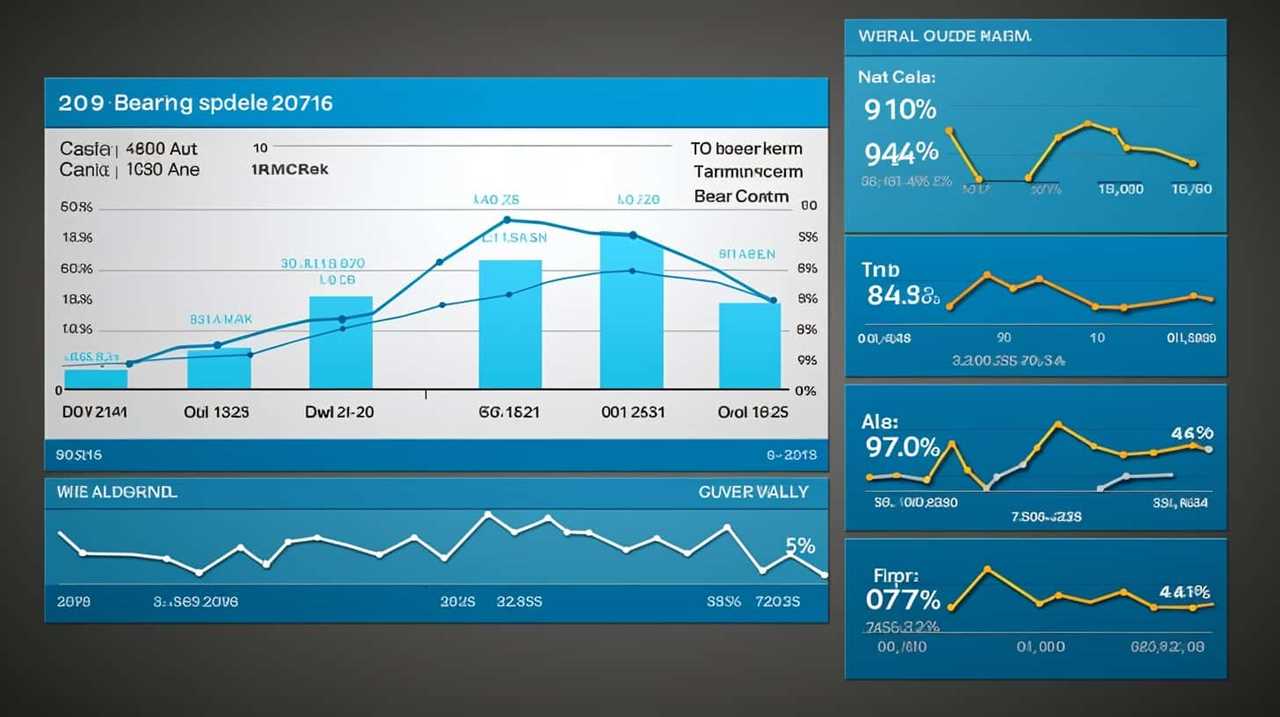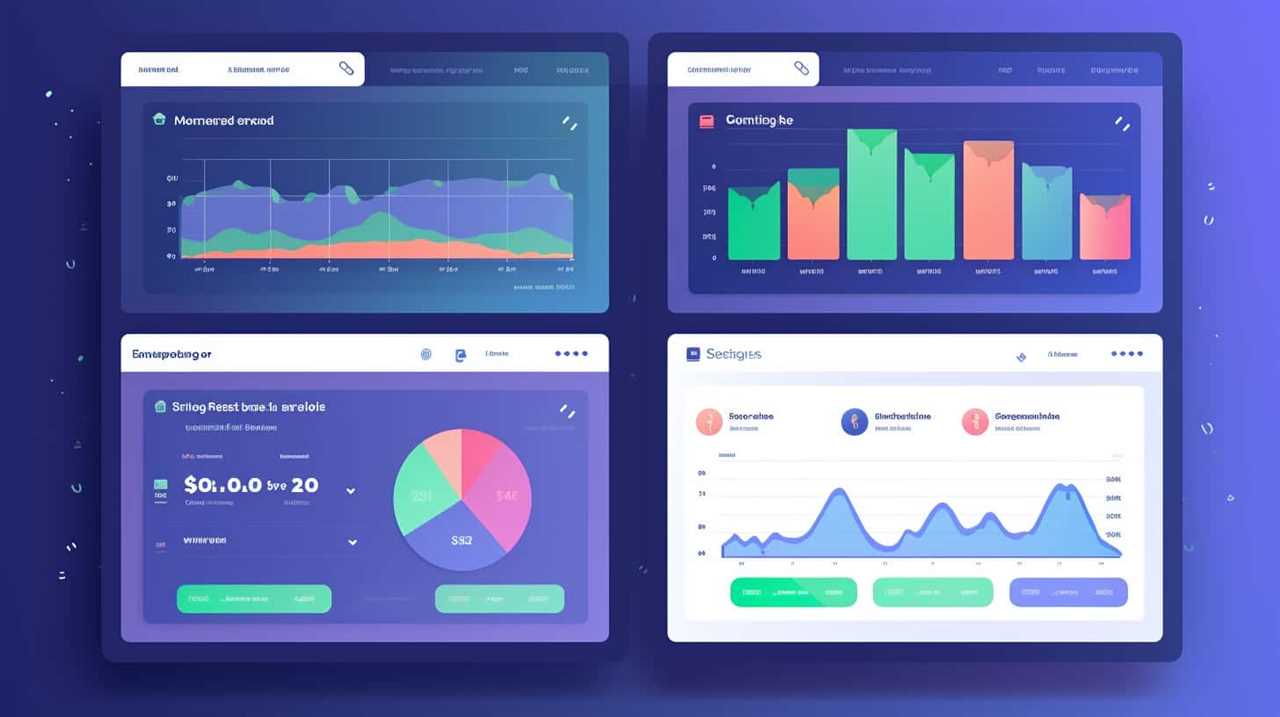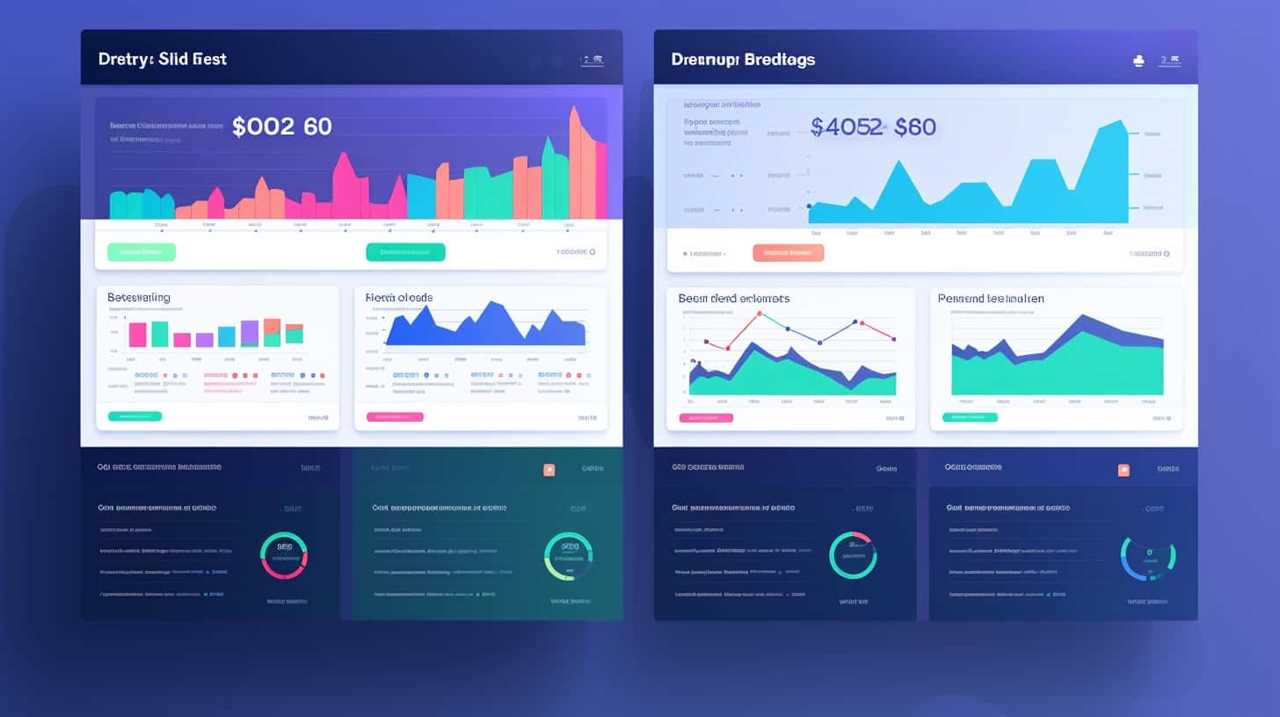We recognize the importance of improving the digital visibility for independent yoga teachers.
That’s why we’re here to guide you through the world of SEO.
By optimizing your website, creating engaging content, and building backlinks, you can stretch your reach and attract more students.
We’ll show you how to improve user experience, optimize for mobile, and implement local SEO strategies.

With our expert tips, you’ll be able to measure and track your SEO success, all while enhancing your yoga teaching mastery.
Key Takeaways
- Enhance online presence and reach a wider audience
- Incorporate relevant keywords strategically into website content
- Create high-quality and engaging content aligned with search intent
- Continuously measure and track SEO success to optimize efforts
The Importance of SEO for Yoga Teachers
In today’s digital age, we understand the importance of SEO for yoga teachers in order to enhance our online presence and reach a wider audience. As independent yoga teachers, it’s crucial for us to implement effective SEO strategies for yoga retreats and optimize our websites for yoga teacher trainings. By doing so, we can increase our visibility on search engine result pages and attract more potential students.
When it comes to SEO strategies for yoga retreats, it’s important to focus on creating high-quality, informative content that’s relevant to the retreat experience. This includes incorporating keywords related to the location, activities, and unique offerings of the retreat. Additionally, optimizing the website’s meta tags, titles, and descriptions with these keywords can greatly improve its search engine ranking.
For yoga teacher trainings, SEO tips revolve around highlighting the program’s key features and benefits. This can be achieved by creating dedicated landing pages that provide detailed information about the training, including curriculum, certification, and testimonials. Integrating keywords related to yoga teacher trainings throughout the website and using them naturally in the content can also boost its visibility in search results.

Understanding Keywords and Search Intent
To understand the importance of keywords and search intent, we must delve into their role in optimizing the online visibility of independent yoga teachers.
Keywords are words or phrases that users type into search engines when looking for specific information. Conducting keyword research techniques allows yoga teachers to identify the most relevant and popular keywords in their niche. By incorporating these keywords strategically into their website content, yoga teachers can improve their search engine rankings and attract more organic traffic.
Analyzing search intent patterns is another crucial aspect of understanding keywords. Search intent refers to the purpose behind a user’s search query. It helps yoga teachers understand what their target audience is looking for and enables them to create content that aligns with their needs. By analyzing search intent patterns, yoga teachers can identify the type of content that’s most likely to rank well and meet their audience’s expectations.
By combining effective keyword research techniques with a deep understanding of search intent patterns, independent yoga teachers can optimize their websites, attract more qualified traffic, and ultimately increase their online visibility.

Optimizing Your Website for Search Engines
How can we effectively optimize our website for search engines as independent yoga teachers striving for digital visibility?
One crucial aspect is website design. A well-designed website not only attracts visitors but also helps search engines understand its content. To begin, ensure that your website has a clean and intuitive layout, making it easy for users to navigate and find information. Incorporate relevant keywords in your page titles, headings, and URLs to optimize on-page content. Remember to include alt tags for images, as search engines can’t read images but can understand alt text. Additionally, focus on creating high-quality and valuable content that aligns with your target audience’s search intent.
Another important factor in website optimization is on-page optimization. This involves optimizing individual web pages to improve their search engine rankings. Start by conducting keyword research to identify the most relevant and valuable keywords for your yoga business. Incorporate these keywords naturally throughout your website’s content, including in the body text, headings, and meta descriptions. Use descriptive and compelling meta tags to increase click-through rates on search engine result pages. Furthermore, ensure that your website has a fast loading speed, as search engines prioritize websites that provide a seamless user experience.
Creating High-Quality and Engaging Content
When it comes to creating high-quality and engaging content as independent yoga teachers, there are a few key points to consider.

First, video tutorials can be a great way to engage with your audience and provide them with valuable resources.
Second, blogging can help drive organic traffic to your website by offering informative and educational articles.
Lastly, having a well-planned social media content strategy can help you connect with your followers and attract new ones.
Video Tutorials for Engagement
Our goal is to create a series of high-quality and engaging video tutorials that will captivate our audience and drive increased engagement with our yoga teaching content.

By offering these video tutorials, we aim to provide interactive workshops and live Q&A sessions that will allow our viewers to actively participate and learn from the comfort of their own homes.
These tutorials will cover a wide range of topics, including different yoga poses, breathing techniques, and mindfulness exercises.
We’ll ensure that our videos are visually appealing, with clear and concise instructions, so that our audience can easily follow along and apply what they’ve learned to their own practice.
Through these engaging video tutorials, we hope to deepen our connection with our audience and foster a sense of community among our students.

Blogging for Organic Traffic
To continue building engagement with our audience, we will explore the power of blogging for organic traffic by creating high-quality and engaging content. Blogging is a valuable tool for independent yoga teachers to attract and retain website visitors, increase their online visibility, and establish themselves as experts in their field. By incorporating relevant keywords and optimizing their blog posts for search engines, yoga teachers can attract organic traffic and increase their chances of being discovered by potential students. Additionally, guest blogging opportunities provide a platform for yoga teachers to share their expertise with a wider audience and gain exposure. It is also important for yoga teachers to have an SEO-friendly website design that is user-friendly, mobile-responsive, and easily navigable to improve their website’s search engine ranking. By implementing these strategies, yoga teachers can effectively leverage blogging to drive organic traffic to their websites.
| Pros | Cons |
|---|---|
| Increases online visibility | Requires time and effort to create high-quality content |
| Establishes expertise | Competition from other bloggers |
| Attracts organic traffic | Requires knowledge of SEO best practices |
| Provides guest blogging opportunities | Requires consistent posting schedule |
| Builds brand awareness | May take time to see results |
Social Media Content Strategy
We actively engage our audience on social media platforms through a strategic content strategy. Our social media content is designed to be high-quality and engaging, ensuring that our followers are interested and inspired by what we share.
To maximize our reach and visibility, we incorporate social media advertising into our strategy. This allows us to target specific demographics and increase our brand awareness.
Additionally, we explore influencer collaborations, partnering with influential individuals in the yoga community to expand our reach and build credibility. By working with influencers who have a similar target audience, we can tap into their established following and gain exposure to new potential students.

Through our social media content strategy, we aim to create meaningful connections with our audience and establish ourselves as trusted yoga teachers in the digital space.
Building Backlinks and Authority
When it comes to building backlinks and authority for our yoga teaching websites, it’s important to focus on quality rather than quantity.
This means seeking out natural link building opportunities, such as reaching out to reputable yoga blogs or collaborating with fellow yoga teachers.
Quality Vs. Quantity
One key aspect of building backlinks and authority in SEO for independent yoga teachers is striking the right balance between quality and quantity.

When it comes to backlinks, it’s important to focus on obtaining high-quality links rather than simply aiming for a large number of them. Quality backlinks are those that come from reputable and relevant websites in the yoga or wellness industry. These links carry more weight and can greatly improve your website’s authority and visibility in search engine rankings.
On the other hand, quantity alone won’t be enough to boost your SEO efforts. It’s crucial to prioritize quality over quantity when building backlinks and authority for your yoga teaching business.
Natural Link Building
To continue building backlinks and authority, it’s important to focus on natural link building strategies.
One effective strategy is guest posting, where you write articles for other websites in your niche and include a link back to your own website. This not only helps to establish your credibility and expertise, but also drives traffic to your site.

When choosing websites to guest post on, look for ones with high domain authority and a relevant audience.
Another strategy is outreach, where you reach out to other website owners or bloggers in your industry and ask them to link to your content. This can be done through personalized emails or social media messages.
Building backlinks and authority through natural means is a valuable long-term strategy for improving your website’s search engine rankings.
Utilizing Social Media for SEO
We actively leverage social media platforms for SEO purposes, aiming to enhance digital visibility as independent yoga teachers. Social media advertising is a powerful tool that allows us to reach a wider audience and attract potential students. By creating targeted ads on platforms such as Facebook and Instagram, we can specifically target individuals who are interested in yoga or fitness. This helps us increase our online presence and drive traffic to our websites or social media pages.

In addition to social media advertising, we also explore influencer partnerships. Collaborating with influencers in the yoga and wellness industry allows us to tap into their existing audience and gain credibility. When influencers endorse our services or share our content, it can significantly boost our visibility and attract new followers and potential clients.
To make the most of social media for SEO, we focus on creating high-quality, engaging content that resonates with our target audience. This includes sharing informative blog posts, instructional videos, and inspirational quotes or images. By consistently providing value and building a community around our brand, we increase our chances of being seen and recognized by search engines.
Improving User Experience and Site Speed
When it comes to improving user experience and site speed, there are three key points to consider.
First, having a mobile-friendly design optimization is crucial as more users access websites through their smartphones.

Second, minimizing page loading time is essential to keep users engaged and prevent them from bouncing off.
Lastly, ensuring clear navigation and structure helps users easily find the information they’re looking for, improving their overall experience on the site.
Mobile-Friendly Design Optimization
Mobile optimization enhances user experience and site speed for independent yoga teachers. When it comes to ensuring a seamless experience for mobile users, implementing responsive website design is crucial. Here are three mobile SEO best practices that can help optimize your website for mobile devices:
- Responsive design: Create a website that adapts to different screen sizes and resolutions. This will ensure that your website looks and functions well on any device, whether it’s a smartphone or tablet.
- Fast loading speed: Mobile users expect websites to load quickly. Optimize your website’s images, minimize HTTP requests, and leverage caching to improve site speed. This won’t only enhance user experience but also positively impact your search engine rankings.
- Mobile-friendly navigation: Make it easy for mobile users to navigate your website by implementing intuitive menus, clear call-to-action buttons, and streamlined content. A user-friendly navigation system will keep visitors engaged and encourage them to explore your site further.
Minimizing Page Loading Time
To improve user experience and site speed, it is essential to minimize page loading time for independent yoga teachers. Website performance optimization plays a crucial role in attracting and retaining visitors to your site. One effective way to optimize your website’s performance is by employing image compression techniques. This involves reducing the file size of images without compromising their quality. By compressing images, you can significantly decrease the time it takes for your web pages to load, resulting in a smoother and faster user experience. Additionally, you can utilize caching techniques, such as browser caching and server-side caching, to store certain elements of your website, reducing the need for repeated downloads. By employing these website performance optimization strategies, you can ensure that your site loads quickly and efficiently, enhancing user satisfaction and ultimately boosting your search engine rankings.

| Benefits of Minimizing Page Loading Time | Image Compression Techniques | Caching Techniques |
|---|---|---|
| Enhanced user experience | Lossless compression | Browser caching |
| Faster loading times | Lossy compression | Server-side caching |
| Improved search engine rankings | Lazy loading |
Clear Navigation and Structure
To further enhance user experience and site speed, we can focus on improving clear navigation and structure. Implementing these strategies won’t only make it easier for visitors to navigate your website, but also improve its accessibility and overall performance.
Here are three key steps to improve clear navigation and structure:
- Simplify your menu: Streamline your website’s navigation menu by organizing it into logical categories and subcategories. This will make it easier for users to find the information they’re looking for without feeling overwhelmed.
- Use breadcrumbs: Breadcrumbs provide users with a clear path back to the homepage or previous pages they’ve visited. This helps them understand their location within your website and improves overall navigation.
- Implement schema markup: Schema markup helps search engines understand the content on your website, making it easier for them to index and rank your pages. This can improve your website’s visibility and search engine rankings.
By implementing these strategies, you can improve the user experience on your website and enhance its overall performance.
Now, let’s move on to the next section about mobile optimization for yoga teachers.

Mobile Optimization for Yoga Teachers
We prioritize optimizing our website for mobile devices to ensure seamless accessibility and user experience. In today’s digital age, more and more people are using their smartphones and tablets to browse the internet and access information on the go. As yoga teachers, it’s crucial for us to adapt to this trend and make our websites mobile-friendly.
One way to achieve mobile optimization is through mobile app development. By creating a dedicated mobile app for our yoga classes, we can provide our students with an easy and convenient way to schedule and book classes directly from their mobile devices. This not only enhances the user experience but also increases our visibility and reach.
Additionally, yoga class scheduling can be seamlessly integrated into our website through mobile optimization. By implementing a user-friendly interface and intuitive design, we can make it effortless for students to navigate through our class schedule, view available slots, and make bookings. This not only saves time and effort for both students and teachers but also enhances the overall user experience.
In conclusion, mobile optimization is of utmost importance for yoga teachers in today’s digital landscape. By prioritizing mobile app development and optimizing our website for yoga class scheduling, we can ensure that our students have a seamless and convenient experience accessing our services.

Now, let’s delve into the next section about local SEO strategies for yoga teachers.
Local SEO Strategies for Yoga Teachers
Implementing effective local SEO strategies is essential for independent yoga teachers to enhance their digital visibility and attract local students. By optimizing their online presence for local searches, yoga teachers can ensure that their classes and services are easily discoverable by potential students in their area.
Here are three key strategies to improve local SEO for yoga teachers:
- Register on local business directories: Listing your yoga studio or services on popular local business directories such as Google My Business, Yelp, and Bing Places can significantly boost your visibility in local search results. Make sure to provide accurate and up-to-date information, including your address, phone number, website, and class schedules.
- Encourage online reviews: Positive online reviews not only build credibility for your yoga business but also play a crucial role in local SEO. Encourage your satisfied students to leave reviews on platforms like Google, Yelp, and Facebook. Respond to reviews, both positive and negative, to show your engagement and commitment to providing a great yoga experience.
- Optimize for local keywords: Incorporate relevant local keywords in your website content, meta tags, and headings. For example, include the name of your city or neighborhood along with terms like ‘yoga classes’ or ‘yoga teacher’ to target local search queries. Conduct keyword research to identify the most relevant and high-performing local keywords for your yoga business.
Measuring and Tracking SEO Success
One way to measure and track SEO success for independent yoga teachers is by utilizing analytics tools. These tools provide valuable insights into the performance of your website and the impact of your SEO efforts. By analyzing data such as organic search traffic, keyword rankings, and user engagement metrics, you can effectively measure the return on investment (ROI) of your SEO activities.

SEO analytics tools allow you to track the visibility of your website in search engine results pages (SERPs). You can monitor the rankings of your target keywords and identify opportunities for improvement. Additionally, these tools provide information on the amount of organic traffic your website receives, allowing you to measure the effectiveness of your SEO efforts in driving visitors to your site.
Measuring ROI is an essential aspect of tracking SEO success. By comparing the cost of your SEO efforts with the increase in organic traffic and conversions, you can determine whether your investment in SEO is generating a positive return. SEO analytics tools offer various metrics that help you calculate the ROI, such as conversion rates, average order values, and revenue generated from organic search.
Frequently Asked Questions
How Much Does It Cost to Hire an SEO Expert for Yoga Teachers?
Hiring an SEO expert for yoga teachers comes with a cost, but the benefits outweigh it. SEO expert rates vary, but the investment in digital visibility can lead to increased website traffic, client bookings, and brand recognition.
Can I Do SEO for My Yoga Website Myself or Do I Need Professional Help?
We can definitely do DIY SEO for our yoga website, but hiring an SEO expert can provide immense benefits. They have the expertise to optimize our website, increase visibility, and attract more students.

How Long Does It Usually Take to See Results From SEO Efforts for Yoga Teachers?
Measuring the effectiveness of SEO strategies for yoga teachers involves considering various factors that can impact the timeline for results. It’s important to understand that it may take time to see tangible outcomes from SEO efforts in the yoga industry.
Are There Any Specific SEO Techniques That Work Best for Yoga Teachers?
There are specific SEO techniques that work best for yoga teachers. Yoga website optimization and effective SEO strategies for yoga teachers can improve visibility and attract more students to your classes.
How Can I Ensure That My Yoga Website Ranks Higher in Local Search Results?
To ensure our yoga website ranks higher in local search results, we focus on improving website speed and optimizing meta tags. By doing so, we increase visibility and attract more potential students to our classes.
Conclusion
In the digital world, independent yoga teachers must stretch their way into the realm of SEO to increase their visibility.

By understanding keywords, optimizing websites, creating engaging content, and building backlinks, yoga teachers can enhance their online presence and attract more students.
Don’t let your digital presence be as stiff as a plank pose!
Embrace the power of SEO and watch your yoga business soar like a graceful dancer.









